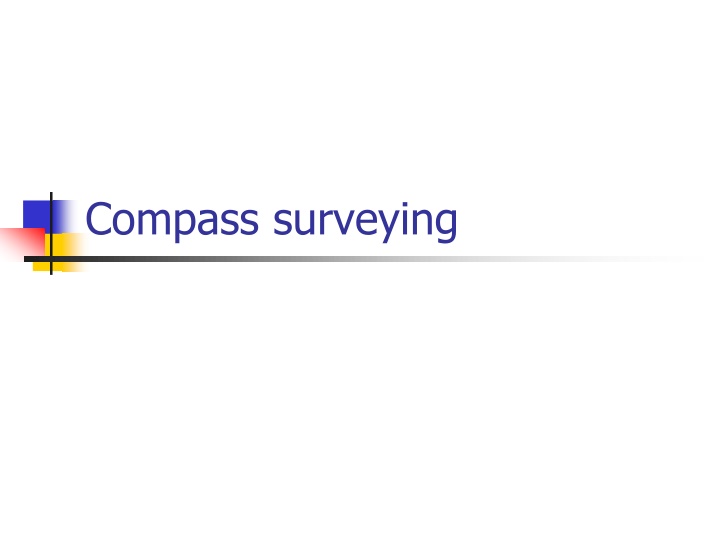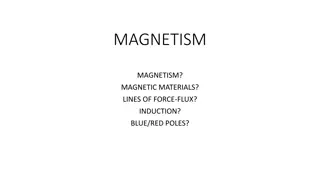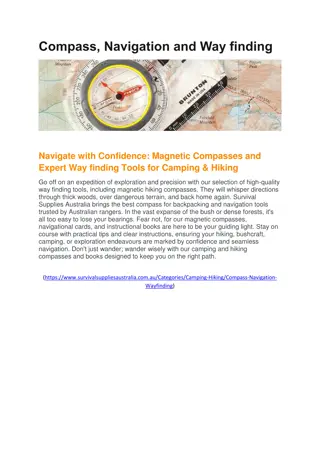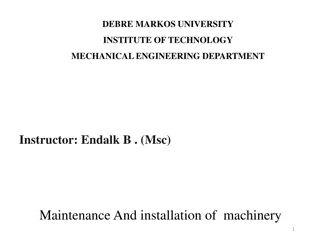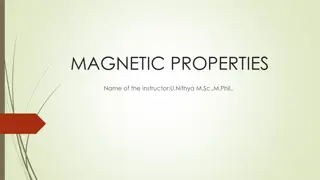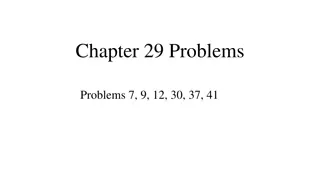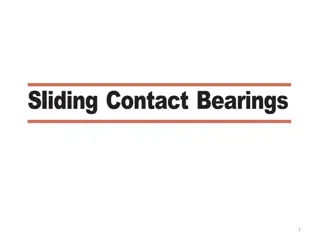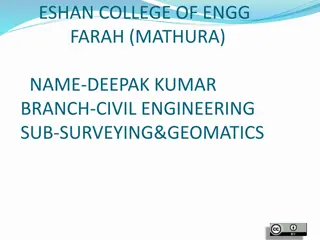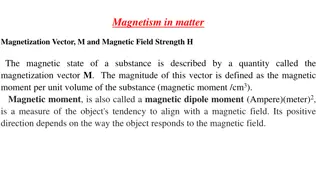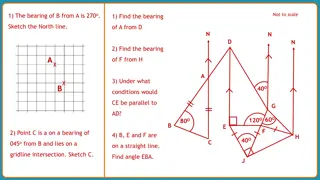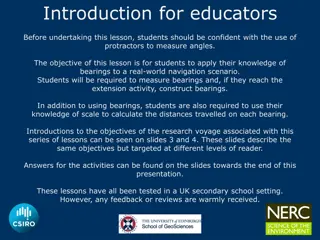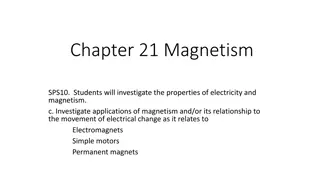Basics of Compass Surveying and Magnetic Bearings
Compass surveying involves the use of compasses to determine directions and bearings during surveying activities. This method utilizes tools like prismatic compasses and magnetic needles to establish true and magnetic meridians, as well as arbitrary and grid meridians. Understanding concepts like whole circle bearing, quadrantal bearing, magnetic declination, and dip of the magnetic needle is crucial for accurate measurements and corrections in traversing. Different methods, such as adjusting for local attraction, are employed to ensure surveying accuracy.
Download Presentation

Please find below an Image/Link to download the presentation.
The content on the website is provided AS IS for your information and personal use only. It may not be sold, licensed, or shared on other websites without obtaining consent from the author.If you encounter any issues during the download, it is possible that the publisher has removed the file from their server.
You are allowed to download the files provided on this website for personal or commercial use, subject to the condition that they are used lawfully. All files are the property of their respective owners.
The content on the website is provided AS IS for your information and personal use only. It may not be sold, licensed, or shared on other websites without obtaining consent from the author.
E N D
Presentation Transcript
Compass traversing: Important Definition True meridian: Line or plane passing through geographical north pole and geographical south pole North pole True meridian True bearing Magnetic meridian: When the magnetic needle is suspended freely and balanced properly, unaffected by magnetic substances, it indicates a direction. This direction is known as magnetic meridian. The angle between the magnetic meridian and a line is known as magnetic bearing or simple bearing of the line. Magnetic bearing Magnetic meridian
Arbitrary meridian: Convenient direction is assumed as a meridian. Grid meridian: Sometimes for preparing a map some state agencies assume several lines parallel to the true meridian for a particular zone these lines are termed as grid meridian. Designation of magnetic bearing Whole circle bearing (WCB) Quadrantal bearing (QB) WCB: The magnetic bearing of a line measured clockwise from the North Pole towards the line is known as WCB. Varies 0-360
Quadrantal Bearing: The magnetic bearing of a line measured clockwise or anticlockwise from NP or SP (whichever is nearer to the line) towards the east or west is known as QB. This system consists of 4-quadrants NE, SE, NW, SW. The values lie between 0-90 QB of OA = N a E Reduced Bearing: When the whole circle bearing of a line is converted to quadrantal bearing it is termed as reduced bearing. Fore and Back Bearing: In WCB the difference between FB and BB should be exactly 180 BB=FB+/-180 Use the +ve sign when FB<180 Use the ve sign when FB> 180
Magnetic declination: The horizontal angle between the magnetic meridian and true meridian is known as magnetic declination. Dip of the magnetic needle: If the needle is perfectly balanced before magnetisation, it does not remain in the balanced position after it is magnetised. This is due to the magnetic influence of the earth. The needle is found to be inclined towards the pole. This inclination of the needle with the horizontal is known as dip of the magnetic needle. Local Attraction Method of correction for traverse: First method: Sum of the interior angle should be equal to (2n-4) x 90. if not than distribute the total error equally to all interior angles of the traverse. Then starting from unaffected line the bearings of all the lines are corrected using corrected interior angles. Second method: Unaffected line is first detected. Then, commencing from the unaffected line, the bearing of other affected lines are corrected by finding the amount of correction at each station.
Methods of traversing Chain traversing: 15 m 15 m Compass traversing: Fore bearings and back bearings between the traverse leg are measured Theodolite traversing: Horizontal angles between the traverse legs are measured. The length of the traverse legs are measured by chain/tape or by stadia method Plane table traversing: Plane table is set at every traverse station in clockwise and anticlockwise direction and the circuit is finally closed. During traversing the sides of the traverse are plotted according to any suitable scale.
Checks on traverse: Closed traverse Check on closed traverse: Sum of the measured interior angles (2n-4) x 90 Sum of the measured exterior angles (2n+4) x 90 The algebric sum of the deflection angles should be equal to 360 . Right hand deflection is considered +ve, left hand deflection ve Check on linear measurement The lines should be measured once each on two different days (along opposite directions). Both measurement should tally. Linear measurement should also be taken by the stadia method. The measurement by chaining and stadia method should tally.
Checks on traverse: Open traverse Taking cut-off lines: measured the bearings and lengths of cut off lines after plotting and tally with actual values. Taking an auxiliary point: Take P permanent point as auxiliary point measured bearings and lengths of P from each traverse point. If survey is accurate, while plotting all the measured bearing of P should meet at P.
Problems: Convert the following WCBs to QBs (a) WCB of AB = 45 30 (Ans 45 30 ) (b) WCB of BC = 125 45 (Ans 180- 125 45 = 54 15 ) Fore bearing of the following lines are given. Find back bearing AB=S 30 30 E BC=N 40 30 W The magnetic bearing of a line AB is 135 30 what will be the true bearing, if the declination is 5 15 W.
Problems Included angle at A= 280-180-40=60 =FB of DA-180-FB of AB Included angle at B= 40+180-70= 150 =FB of AB+180-FB of BC Included angle at C= 70+180-210 =FB of BC+180-FB of CD Formula: FB of previous line+/-180- FB of next line
